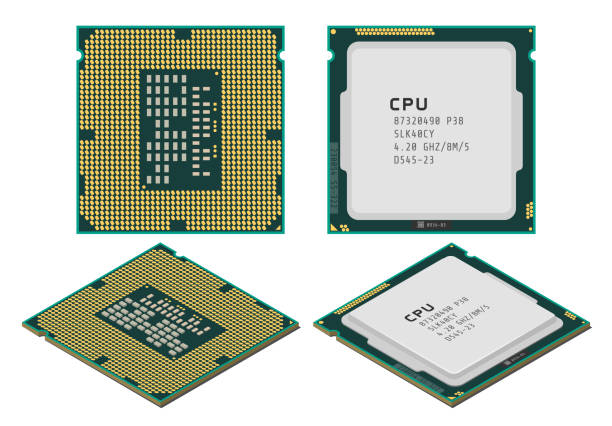
CPU vs Processor
Computers are powerful machines that execute instructions to perform calculations, process data, and generate output. At the heart of every computer lies a core component responsible for this execution the Processor. Often referred to as the CPU (Central Processing Unit), this vital hardware handles everything from basic arithmetic to complex simulations.
While the terms CPU and Processor are frequently used interchangeably, they are not always synonymous. Understanding their distinctions, roles, and architecture is essential for both professionals and enthusiasts alike.
What Is a CPU?
A Central Processing Unit (CPU) is the primary unit in a computer system responsible for interpreting and executing instructions. It functions as the "brain" of the computer, directing all activities by processing data from input devices and sending instructions to output devices.
The CPU is composed of three key components:
-
Arithmetic Logic Unit (ALU): Handles arithmetic and logic operations.
-
Control Unit (CU): Directs the operation of the processor.
-
Registers: Small, high-speed memory units that store temporary data during processing.
What Is a Processor?
A Processor is a broader term that refers to any chip that executes instructions including CPUs, GPUs (graphics processing units), DSPs (digital signal processors), and SoCs (systems on a chip). It contains multiple engines and subsystems like memory controllers, connectivity modules, and in some cases, graphics and audio processing units.
Modern processors often integrate multiple CPU cores, cache memory, and built-in controllers, making them far more versatile than a standalone CPU.
Key Differences Between CPU and Processor
| Feature | CPU | Processor |
|---|---|---|
| Definition | Core component executing instructions | A chip that may include one or more CPUs, plus additional features |
| Composition | ALU, CU, Registers | May include CPU cores, cache, GPU, memory controller, and I/O interfaces |
| Use Case | Embedded systems, microcontrollers | PCs, laptops, smartphones, servers |
| Complexity | Simpler, smaller scope | More complex with multiple integrated systems |
| Memory Handling | Typically includes or connects to RAM | Manages memory, I/O, and peripherals |
Functions of CPUs and Processors
Both CPUs and Processors are built around a fundamental instruction cycle:
-
Fetch – Retrieve instructions from memory
-
Decode – Translate instructions into signals
-
Execute – Perform the instruction
-
Write Back – Store the result
Processors perform this cycle across one or many cores, while modern CPUs may handle multithreaded operations to increase performance.
Core Components and Architectures
-
Von Neumann Architecture: Combines instruction and data memory; standard in general-purpose computers.
-
Harvard Architecture: Separates data and instruction memory; used in embedded systems.
-
Hybrid Systems: Modern processors often combine both architectures for efficiency.
Types of CPUs and Processors
-
By Core Count:
-
Single-core
-
Dual-core
-
Quad-core
-
Octa-core
-
-
By Purpose:
-
General Purpose Processors (GPP) – Used in PCs and servers
-
Microcontrollers (MCUs) – For embedded applications
-
Digital Signal Processors (DSPs) – Optimized for audio, video, and communication
-
Application-Specific Integrated Processors (ASIPs) – Customized for specific tasks
-
Performance Factors
Several characteristics define processor performance:
-
Clock Speed (GHz): Determines how many operations per second the processor can perform.
-
Cores and Threads: More cores allow multitasking and parallel processing.
-
Cache Memory: Stores frequently used data for quick access (L1, L2, L3).
-
Bus Speeds and Bandwidth: Impact how fast data moves between CPU, memory, and peripherals.
-
Heat Dissipation: Efficient cooling is critical to maintain performance and prevent hardware failure.
Manufacturers
Major processor and CPU manufacturers include:
-
Intel – Inventor of the original 4004 CPU; leader in desktop and server CPUs
-
AMD – Known for high-performance multi-core CPUs and APUs
-
ARM Holdings – Designer of mobile and embedded processor architectures
-
Qualcomm, Apple, MediaTek, NVIDIA, IBM, Samsung, Motorola – Each specializing in niche applications or custom chipsets
Conclusion
The CPU and the processor are central to computing, but while every CPU is a processor, not every processor is just a CPU. CPUs specialize in executing instructions, while processors often combine multiple computing components into one powerful unit.
Whether you're selecting hardware for a new PC build or optimizing an embedded system, understanding the differences and functions of these components ensures informed decisions and optimal performance.
For more information, contact PLG Automation:
Email: sales@plgautomation.com
Phone: 800-906-9271
